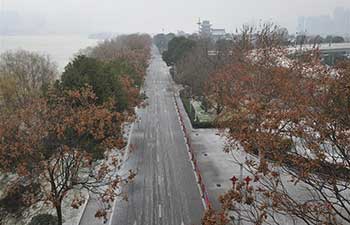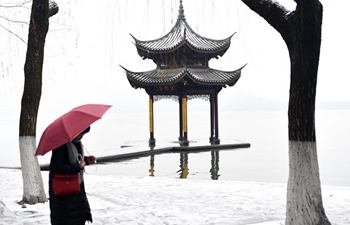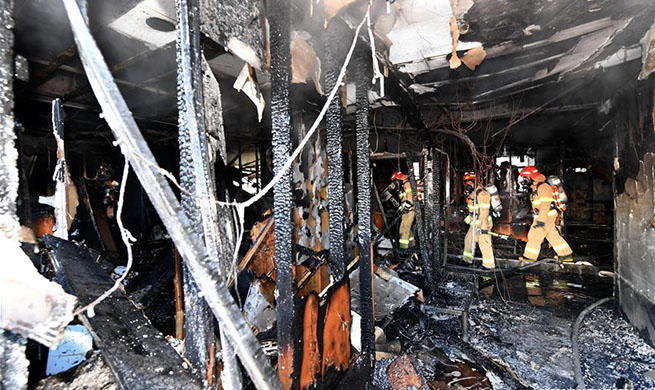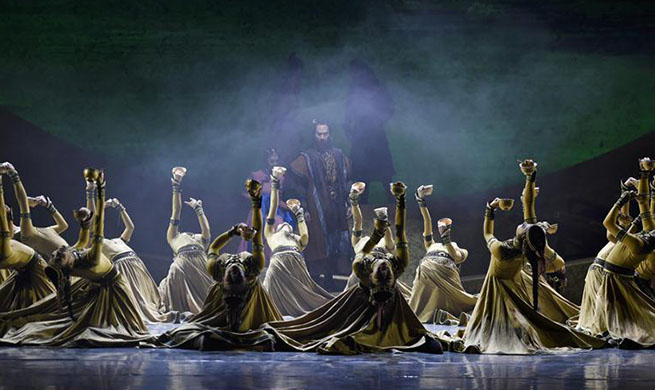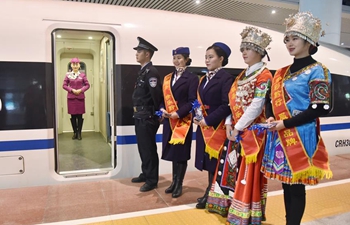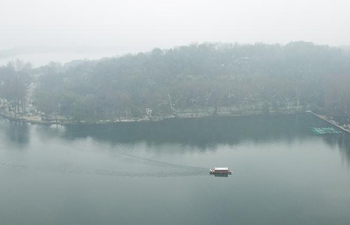TOKYO, Jan. 26 (Xinhua) -- Japan deployed its first F-35A stealth fighter on Friday at the Misawa Air Base in Aomori Prefecture in the country's northeast in a planned buildup of military assets that have been deemed constitutionally unsound and unsettling for regional stability.
The deployment of the next-generation fighter marks the beginning of the formation of an Air Self-Defense Force (ASDF) squadron comprising 10 of the jets at the base from the next fiscal year starting in April, the defense ministry said.
The jets will number 42 eventually, according to the defense ministry's plans, and the F-35As will be capable of carrying the already budgeted for long-range Kongsberg Joint Strike Missile (JSM).
The air-launched standoff missiles are, controversially, capable of striking enemy bases, the scenario of which would contravene Japan's constitutionally bound defense-only stance.
Japanese Prime Minister Shinzo Abe, however, is ardently trying to amend a key clause in the Supreme Law to achieve his career goal of further loosening restrictions on the nation's Self-Defense Forces, despite the majority of Japanese people being against changing the pacifist charter for the first time since World War II.
Abe's moves towards ramping up spending on military hardware, constitutional amendments, and the normalization of Japan's military have also unsettled some of Japan's regional neighbors and the broader international community.
Japan's Defense Minister Itsunori Onodera was quoted as telling a press briefing on the matter on Friday that the (JSM) missiles, however, would not be used for attacking enemy bases.
"The introduction of the missiles is not aimed at targeting enemy military bases. We rely on U.S. strike capabilities for attacking enemy bases and this will remain unchanged," said Onodera.
But the defense ministry here has previously espoused the stealth fighter, the Pentagon's most expensive weapons system in history, for its ability to be configured for air-to-air engagements, as well as air-to-ground and air-to-sea engagements.
"The stealth fighters are aimed at intending to help bolster Japan's Air Self-Defense Force (JASDF) achieving superior air-combat capability," the ministry said of its planned acquisition.
It has also referred to the fact that developments have been underway for the fighter jet to carry next-generation weaponry, including the possibility of a solid state laser and a High Speed Strike Weapon (HSSW), which is a hypersonic missile.
The fifth-generation, multi-role stealth fighter jets have been selected by Japan's defense ministry as its future mainstay fighter, as the jet offers superior stealth capabilities, second only to that of the U.S. F-22 Raptor, with a radar cross-section roughly equal to the size of a metal golf ball, making it largely undetectable to radars.
The cost of an individual jet is in the region of 85 million U.S. dollars, meaning Japan's spending on "defense" will skyrocket.
Defense spending for fiscal 2018 has hit a record 5.19 trillion yen (47.59 billion U.S. dollars) under the Abe administration, with military purchasing costs increasing every year since Abe retook office in 2012.
Economists and political pundits critical of the ever-increasing expenditure have highlighted the possibility that with Abe's push to revise the pacifist constitution and remilitarize the nation, such increases in military spending could further unsettle the region and raise tensions.
They have suggested that some of the excessive funds would be better redirected into chipping away at public debt here -- the highest in the industrialized world -- stimulating economic growth drivers, and dealing with the nation's aging and shrinking population.
Of additional concern about Japan ramping up its military hardware is the possibility that the Maritime Self-Defense Force (MSDF) Izumo "helicopter carrier," the largest warship Japan has entered into service since WWII, is in fact a de facto aircraft carrier, as military observers have attested.
The 248-meter vessel weighing 19,500 tons, while being able to accommodate 14 helicopters, is also believed to be able to launch the controversial U.S. Osprey tilt-rotor aircraft, as well as F-35B stealth fighter jets from its lengthy flight deck.
The "offensive" weapon is in direct contravention of Japan's pacifist constitution, a key clause of which reads that "land, sea, and air forces, as well as other war potential, will never be maintained."







